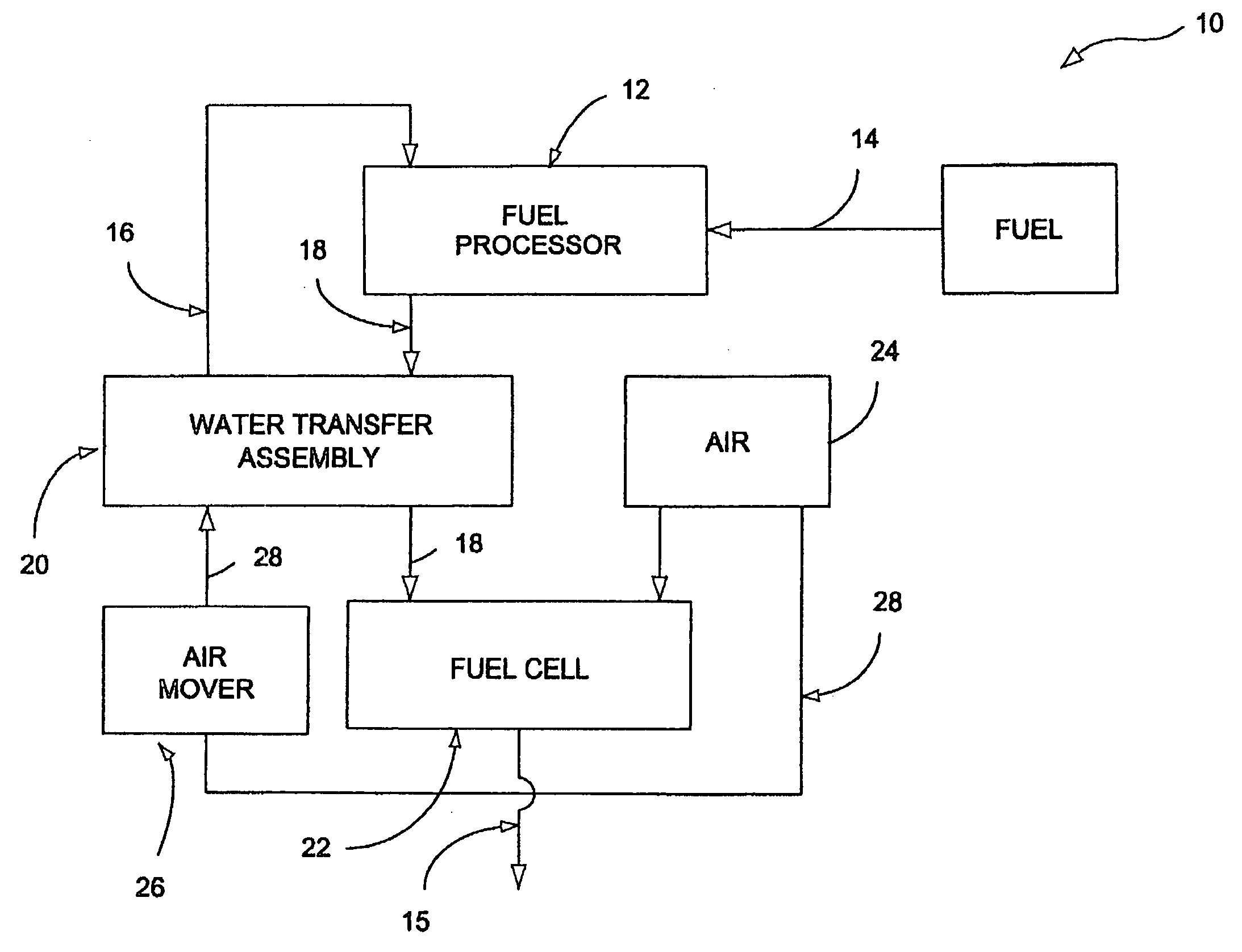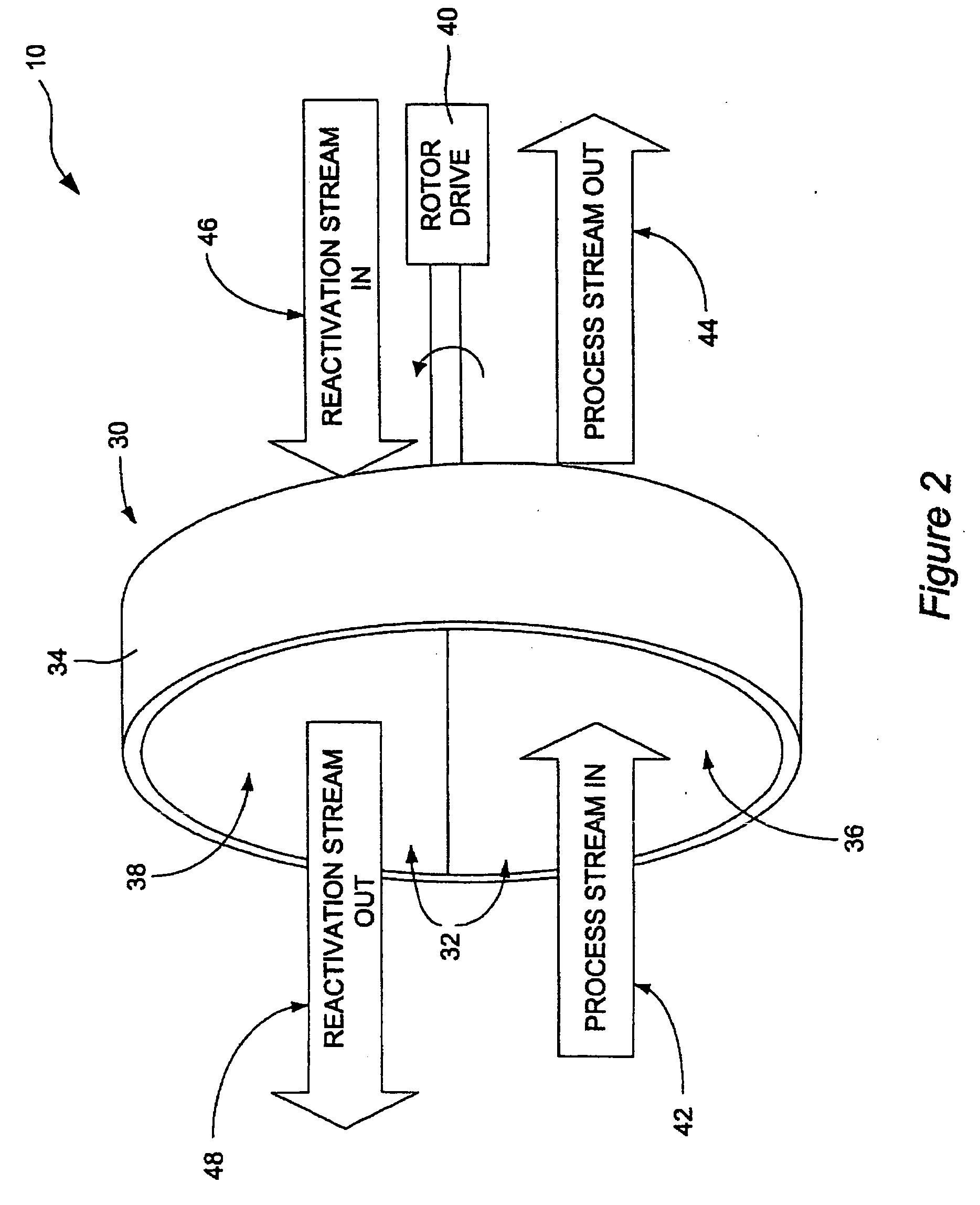Fuel reformer system with improved water transfer
a technology of reformer system and water transfer, which is applied in the direction of fuel cells, electrical equipment, electrochemical generators, etc., can solve the problems of increasing the complexity of the resulting reformer system, increasing the complexity of the reformer system, and increasing the overall efficiency of the system, so as to reduce or eliminate the need for liquid water handling, improve the recovery and utilization of water vapor and/or heat energy, and reduce energy requirements and component complexity
- Summary
- Abstract
- Description
- Claims
- Application Information
AI Technical Summary
Benefits of technology
Problems solved by technology
Method used
Image
Examples
fourth embodiment
[0035] The dehumidified fuel cell exhaust 120 is then fed into the combustor 124 to consume any residual hydrogen or fuel vapor and produce a combustor exhaust stream 126. In this fourth embodiment, the combustor exhaust stream 126 and an oxidant stream 128 may then both be fed into a water transfer assembly 134. The exhaust stream 126 and / or the oxidant stream 128 may pass directly into the water transfer assembly 134 or be conditioned by an intermediate heat exchanger as illustrated in FIG. 3. In the water transfer assembly 134, water vapor from the combustor exhaust 126 is again transferred to the oxidant stream 128 to produce a wet oxidant stream 116 that is fed into the fuel processor 112.
[0036] A fifth embodiment is illustrated in FIG. 6. This fifth embodiment again provides a hydrocarbon fuel cell plant 110 comprising a fuel processor 112 for reacting a hydrocarbon fuel feed stream 114 and an oxidant feed stream 116 to produce a hydrogen-containing reformate stream 118. As in...
fifth embodiment
[0037] Within the condensing heat exchanger 130, the fuel cell exhaust stream 120 is cooled to below its dew point, inducing the condensation of water vapor present in the fuel cell exhaust stream 120 to form a condensate consisting primarily of water. The condensate is first transferred to a water reservoir 142 and then to a humidifier 144 where it is used to add water vapor to a fuel cell feed stream, preferably the oxidant feed stream 140. The dehumidified or dry fuel cell exhaust stream 146 is then fed into the combustor 124 to consume any residual hydrogen or fuel vapor and produce a combustor exhaust stream 126. In this fifth embodiment, the combustor exhaust stream 126 and an oxidant stream 128 may then both be fed into a water transfer assembly 134, with or without passing through an intermediate heat exchanger. In the water transfer assembly 134, water vapor from the combustor exhaust 126 is again transferred to the oxidant stream 128 to produce a wet oxidant stream 116 tha...
PUM
 Login to View More
Login to View More Abstract
Description
Claims
Application Information
 Login to View More
Login to View More - R&D
- Intellectual Property
- Life Sciences
- Materials
- Tech Scout
- Unparalleled Data Quality
- Higher Quality Content
- 60% Fewer Hallucinations
Browse by: Latest US Patents, China's latest patents, Technical Efficacy Thesaurus, Application Domain, Technology Topic, Popular Technical Reports.
© 2025 PatSnap. All rights reserved.Legal|Privacy policy|Modern Slavery Act Transparency Statement|Sitemap|About US| Contact US: help@patsnap.com



